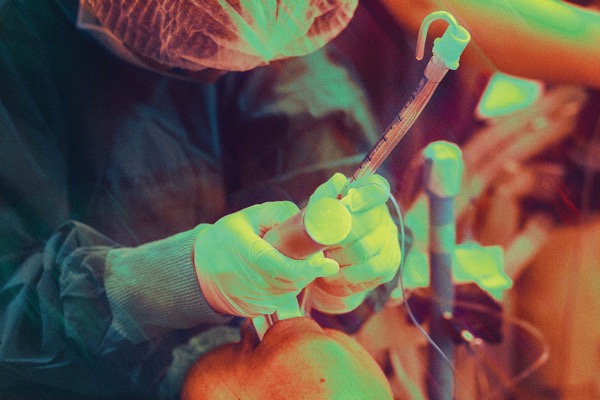[Re: “The Frost Series,” October 2023, page 28]

Dear Dr. Sibert, I don’t understand a repeated attempt to ventilate by mask when such has been difficult in the past. Why not go straight to a laryngeal mask airway (LMA)? If I can’t ventilate with a face mask, that’s what I’ll do anyway, so why waste precious apnea time? Furthermore, my hands are tied up when ventilating via the face mask. The goal in that case is to continue the anesthetic, ventilating the patient with the volatile agent using pressure-cycled ventilation, leaving me with free hands and plenty of time to ponder, “What’s next?”
Recently, my colleagues and I had the challenge of a known difficult intubation case where the patient’s prior trip to the OR for a rotator cuff repair resulted in a soft palate perforation after a failed, hurried intubation attempt by a CRNA with a GlideScope (Verathon). Incredibly, the patient returned for a repeat attempt after the surgeon canceled his case. I insisted on performing the airway management myself. The patient was very difficult to ventilate by mask on the prior attempt, so we placed an LMA after propofol induction. After easy ventilation via the LMA, we administered rocuronium and commenced pressure-cycled ventilation with sevoflurane and oxygen. The first laryngoscopy with an angulated GlideScope yielded a grade 2a view of the vocal cords, but intubation failed because the endotracheal tube bounced off the vocal cords and went perpendicular with attempted advancement. We returned to LMA ventilation while we discussed our next steps. A second attempt with the GlideScope using a bougie failed because the bougie kept going posterior to the cords and external cricoid pressure couldn’t bring the cords in line. After a third bout of LMA ventilation, the patient was successfully intubated with a Bullard laryngoscope using the multifunctional stylet (coaxial tube advancement after airway exchange catheter was placed through the vocal cords using the multifunctional stylet).
Two points here: First, the LMA proved an extremely useful bridge airway in a leisurely, thoughtful approach to a difficult intubation in a patient where a prior panicked approach had resulted in airway trauma. Second, while the video laryngoscope may have emerged as a standard for difficult intubation, we should not so quickly discard earlier methods when video laryngoscopy has failed (Can J Anaesth 1995;42[3]:246-248).
Cohn is an anesthesiologist at Mercy Hospital, in Ada, Okla.
Anesthesiology News asked whether Karen Sibert, MD, wanted to respond, and received the following:
Dear Dr. Cohn, thank you very much for your letter. I agree with you completely that a laryngeal mask is an essential tool in management of the difficult airway. Part of my plan for any morbidly obese patient, or any patient with a history of difficult intubation, is to have a size-appropriate laryngeal mask available, open, cuff checked if applicable and ready to place immediately if needed.
In the case of our patient, I respectfully disagree with you about the wisdom of undertaking face mask ventilation where others have reported difficulty.
Sadly, mask ventilation skills today are not what they should be. Too often, I have seen residents, recent graduates and nurse anesthetists unable to ventilate by face mask in cases where I—an average-sized woman with small-to-average hands—was able to take over and ventilate quite easily. The art of lifting the face to the mask, rather than squashing the mask onto the face, appears to have been lost. Trainees today seldom do mask cases from start to finish, which is how good mask ventilation skills are developed.
Our patient’s face, neck and shoulders were relatively normal and most of her excess weight was in the lower two-thirds of her body. This is often the case with women patients as opposed to men. We had a laryngeal mask available but no need to use it. The CA-1 resident who did the case with me was able to ventilate the patient easily by face mask with one hand after we had settled the patient in an appropriate sniffing position, with the head of the bed elevated.
In general, my preference (whenever possible) is to avoid inserting anything into the oropharynx before laryngoscopy, whether an oral airway or a laryngeal mask, in order to avoid any irritation that might result in swelling or bleeding.
In your patient’s case, it would have been interesting to see if a video laryngoscope with a Macintosh blade might have enabled successful intubation, as it did in our case where previous attempts with a hyperangulated blade had not worked well.
Sibert, a past president of the California Society of Anesthesiologists and member of the Anesthesiology News editorial advisory board, is the medical editor of “The Frost Series.”

